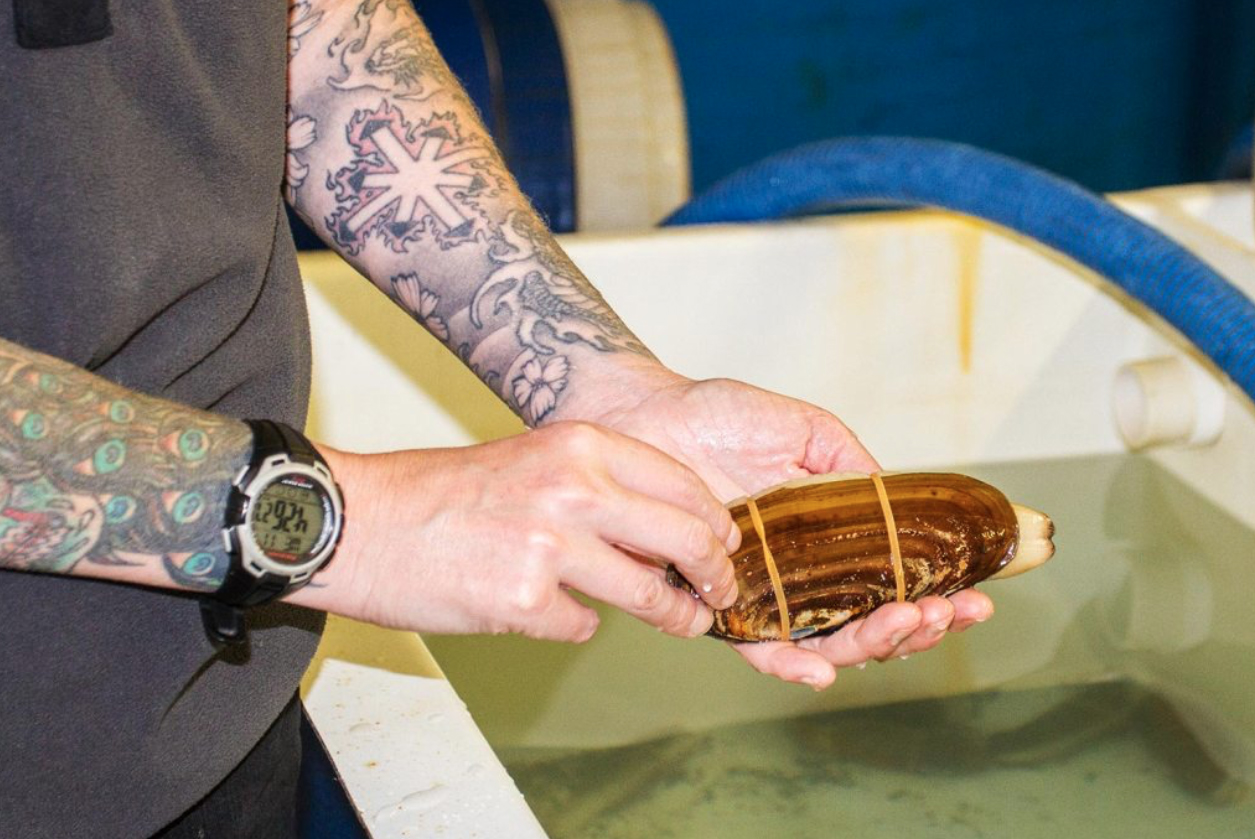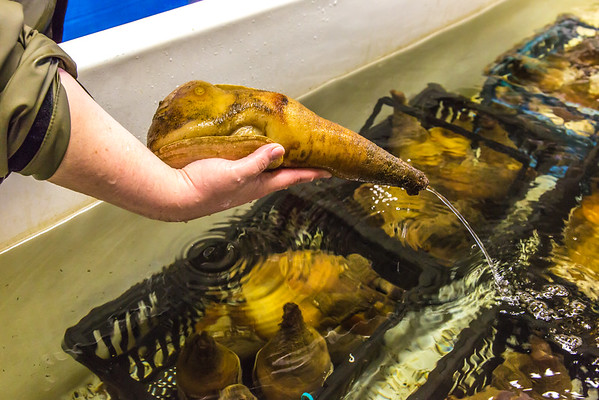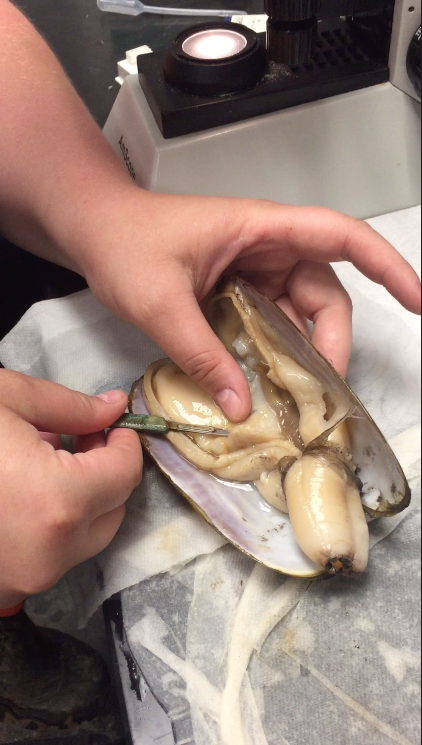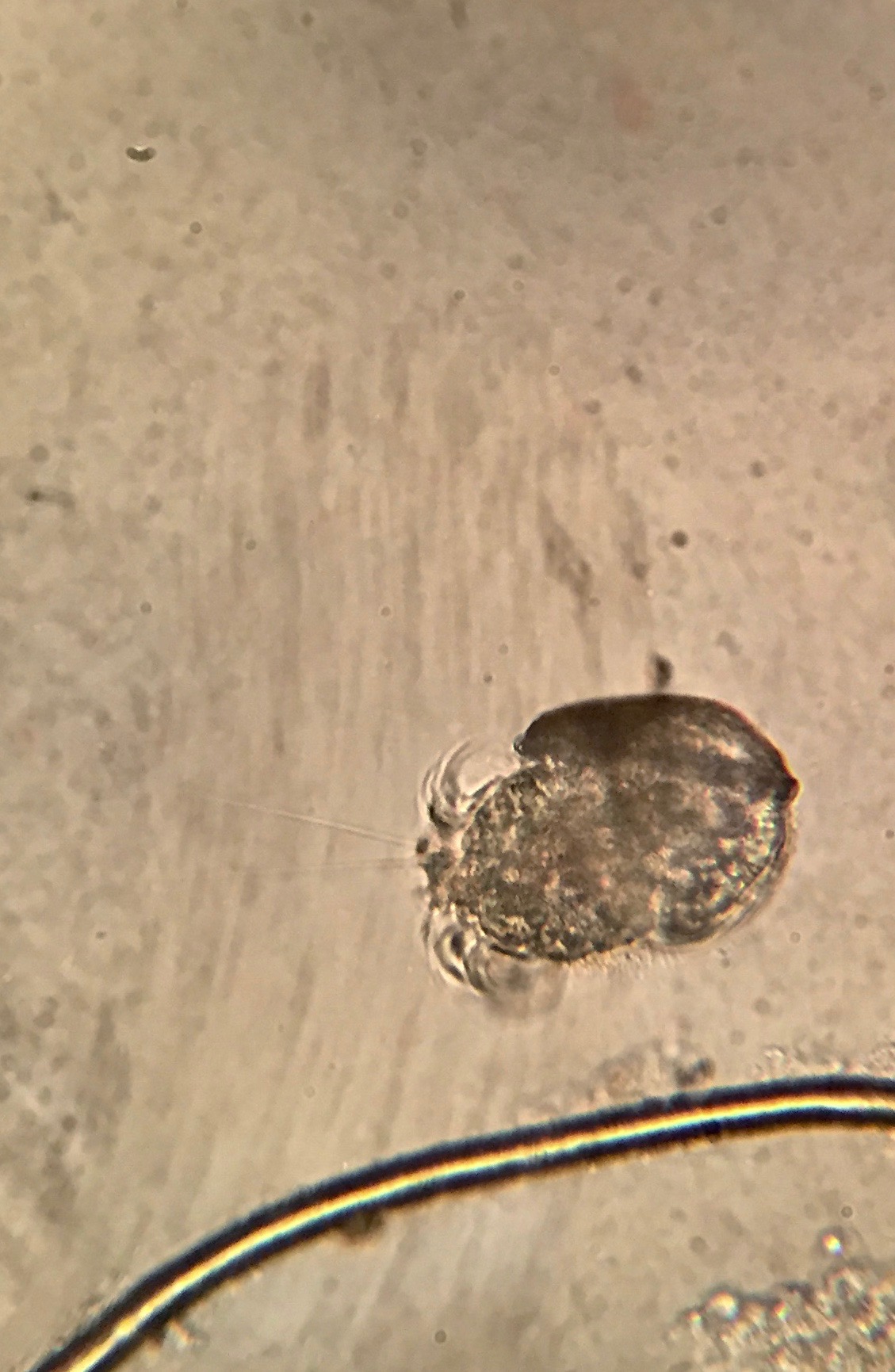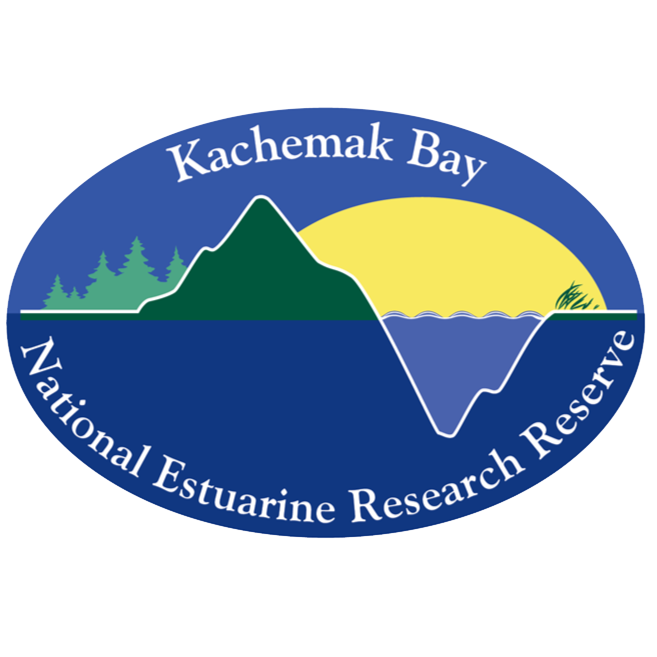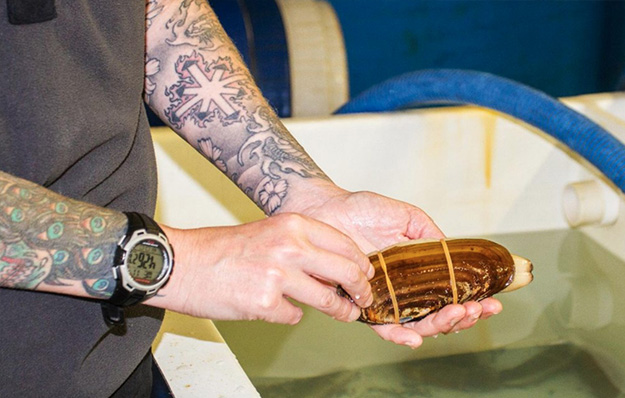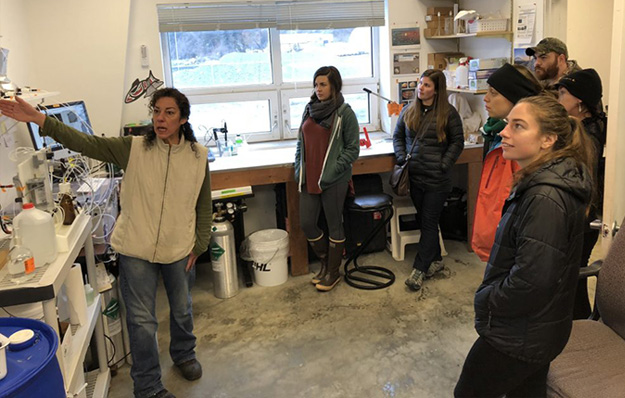 Bivalves
Bivalves

Young oysters grown at the Alutiiq Pride Marine Institute in Seward, AK.
What We Know
To date, little is known about the effects of ocean acidification on bivalves in Alaska. Researchers with the University of Alaska, Fairbanks are collaborating with the Alutiiq Pride Marine Institute in Seward to conduct studies on species of bivalves that are important recreational and subsistence foods for communities in coastal Alaska.
Preliminary studies on butter clams found significant levels of shell dissolution after a two-week exposure to levels of acidity expected for the year 2100.
Preliminary data has shown that razor clams have a unique way of building their shells that utilizes a form of calcium carbonate early in development that may leave them more susceptible to acidification. This process, known as a concretion, delays the production of a fully mineralized shell until later in larval development. The discovery of this shell building process in an Alaska bivalve opens an entirely new avenue of questions about other Alaska bivalve species. It is crucial to see how a bivalve’s developmental technique may dictate whether or not the species will be a winner or a loser in the face of an acidified ocean.
Meet the Bivalves
Bivalves are a class of molluscs characterized by bodies that are compressed within a shell made of two parts hinged together. Their name originates from the Latin term meaning “two leaves of a door”. In Alaska, many species of bivalves are important subsistence foods that sustain human life in addition to playing a critical role in Arctic marine food webs. Some regionally-familiar bivalves include clams, oysters, scallops, cockles and mussels.
Photo Gallery
↓Click to enlarge↓
Recent Studies
Studies are underway investigating OA impacts on larval razor clams, juvenile basket cockles, and juvenile littleneck clams. This work aims to better understand how OA-related stress affects shell formation, growth, metabolism and acid-base regulation of these important clam species. These studies seek to identify clam species that are the most sensitive to OA.
Currently, there is no published work on Alaskan bivalves. The following studies illuminate OA response by bivalves in other regions with similar conditions.
Geoduck Clam: Spencer et al. 2019
Geoduck Clam: Spencer et al. 2019
- Geoduck were placed in protected tubes in 2 different habitats (eelgrass and unvegetated) in 4 different bays for 30 days
Results
- pH ranged from 6.71 to 8.34 across sampling region
- No phenotypic differences between pH differences
- No differences in protein abundance, growth, or survival found
- Geoduck may tolerate a wide range of pH in the context of the environment they are reared in
Baltic Clam: Jansson et al 2016
Baltic Clam: Jansson et al 2016
- Experiment performed on Macoma balthica Mesocosms (Baltic clam) deployed in Gulf of Finland: Target PCO2 values 320 (control), 600, 1300, and 1650 uatm. Actual treatment PCO2 values 469, 857, 1072, and 1347 uatm.
- Sediment traps used to quantify settling larvae
- Temp varied from 8 to 16 °C during the experiment, ∼ 45 days, average salinity was 5.7 and TA was 1550 mmol kg-1
Results
- Time to settlement increased with higher PCO2. That is, at low PCO2 time to settlement was shorter.
- Larvae settled at a larger size in high PCO2
- Survival not found to be affect by increased PCO2
Common Cockle: Klok et al 2013
- Mesocosms with sandy sediment and water from the North Sea were used to perform CO2 experiments on the common cockle (Cerastoderma edule).
- Cockles collected from the tidal flats of the Dutch Wadden Sea.
- pH conditions: 8.3 ±0.1, 6.95 ±0.2, 6.7 ±0.2, and temp averaged 16.9 ±2.7°C
Results
- decreased pH negatively affected shell length, shell weight, and flesh dry weight for juvenile cockles (∼1.8 cm shell length)
Implications
Determining bivalves’ ability to persist under realistic future climate scenarios is critical for sustaining their role as recreational and subsistence food sources. Understanding the effects of ocean acidification on different life stages of bivalves is a crucial component in developing effective mitigation and management strategies.
Research conducted at the Alutiiq Pride Marine Institute is of interest to researchers world-wide as there are very few research facilities that can combine shellfish culture and high level carbonate chemistry labs with the research expertise to blend these pure and applied sciences. These studies will impact the global mariculture economy by providing insights necessary for decision makers to choose paths of resiliency that include cultivating resistant strains or transporting vulnerable populations to less susceptible areas.
As prey for an array of marine creatures in intertidal communities, bivalves directly impact the health of coastal ecosystems. Perpetuation of these marine invertebrates impacts all species that rely on them for survival.

